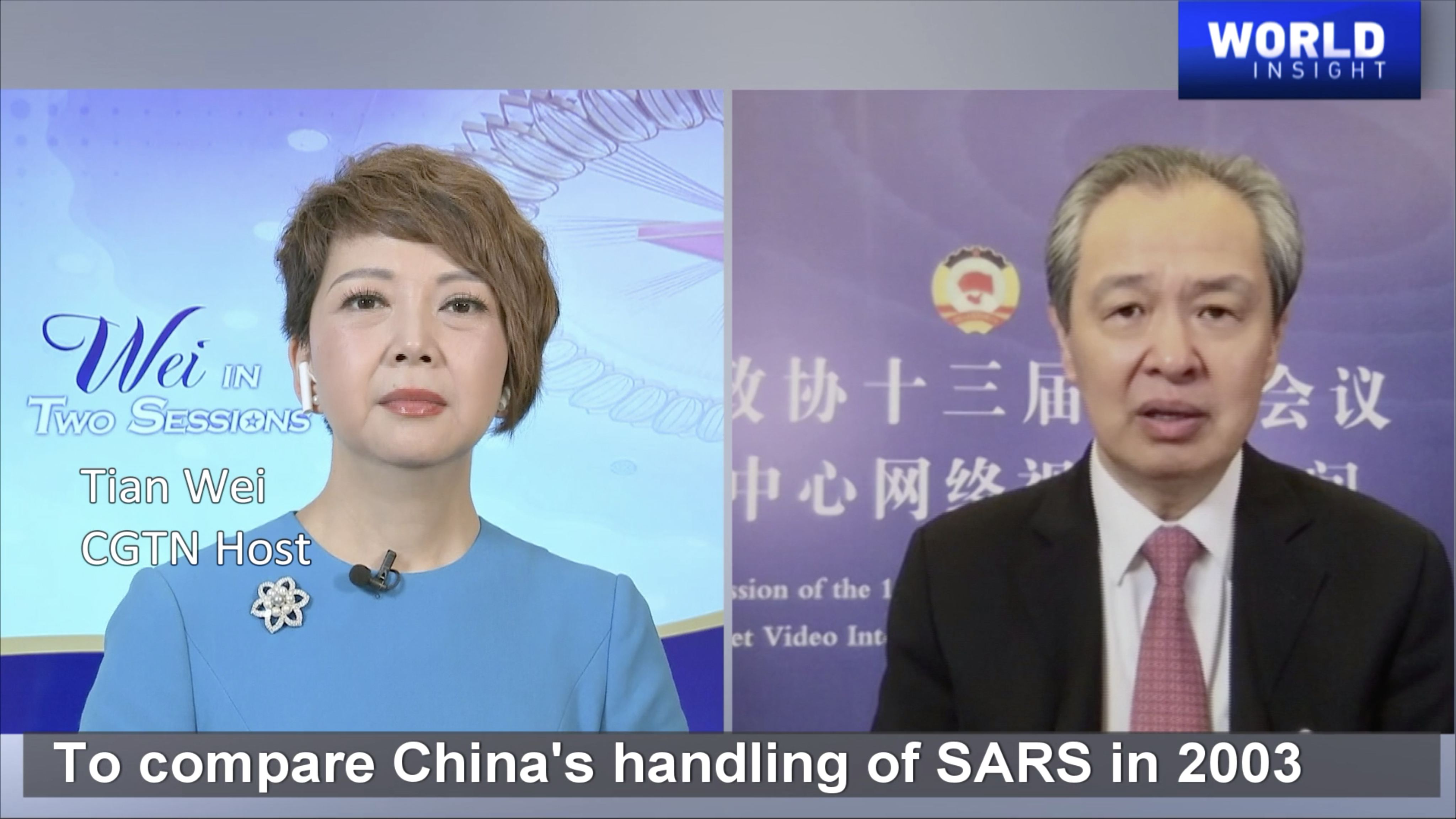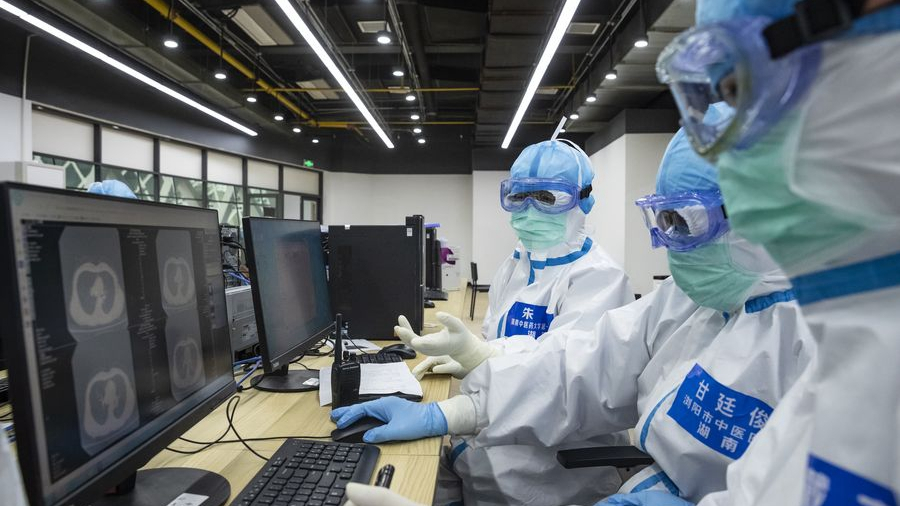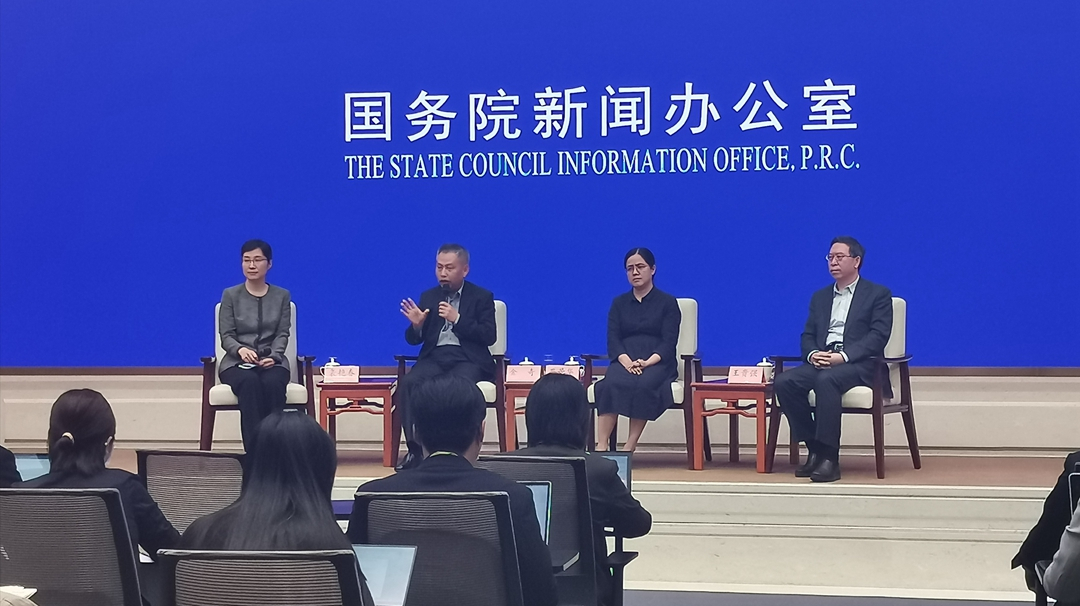04:23

When the SARS epidemic wrecked havoc in China in 2003, Kong Quan was the spokesperson for the Chinese Foreign Ministry. He said he made the first official announcement to the world regarding China's battle with the severe acute respiratory syndrome. Now 17 years later, as he witnessed China's handling of COVID-19 from a distance, Kong has many reflections on how the country has been trying to learn to communicate about public health issues, both internally, and externally.
Kong now serves as the vice president of the Subcommittee of Foreign Affairs of the National Committee of the Chinese People's Political Consultative Conference (CPPCC). While speaking with CGTN Host Tian Wei on the sidelines of the "Two Sessions," he said the country really lacked a communication mechanism back then. Kong recalled that during SARS there was no established system in which information regarding the serious disease could be reported to the authorities. Even the first time Kong gave out news about SARS to reporters, he did not get the relevant information from the central authority. Instead, what on his hand was only a piece of paper with report from local health department of Shanxi Province about the emergence of a disease, later known as SARS.
Shanxi Province was one of the hardest hit regions in China during SARS, along with Guangdong and Beijing. Looking back, Kong reflects that within China, information did not travel as smoothly and effectively then as one would expect today.

Doctors check a patient's CT scan at a temporary hospital in Jiangxia District in Wuhan, central China's Hubei Province, February 25, 2020. /Xinhua
Doctors check a patient's CT scan at a temporary hospital in Jiangxia District in Wuhan, central China's Hubei Province, February 25, 2020. /Xinhua
Following the containment of SARS, China immediately began working on improving its infectious diseases reporting system. By 2004, the country had established an online direct reporting system. The network allows hospitals throughout the country, in big cities and small remote villages, to input reports of infectious diseases and immediately notify the central health authorities.
As reporting system got upgraded, government spokespersons also went into training. Kong recalled the then director of China's State Council Information Office, Zhao Qizheng, organizing a study group for spokespersons from various government ministries and departments. The subject: "Transparent and effective information-sharing with the world."
Kong said that compared to 17 years ago, not only the speed of information traveled faster this time about COVID-19, but the transparency has also been improved, as demonstrated by the vast amount of press conferences and information-sharing sessions hosted by various government departments at both central and local levels.
Kong recalled that at the beginning of the SARS epidemic, many governmental departments did not see it as a constant obligation to actively communicate with the public. Reporters, on the other hand, might not have a chance to ask questions face to face. When they called or faxed their queries, replies could be optional.
As a result, the Ministry of Foreign Affairs, which had its regular spokesperson press conferences twice a week, became a major platform then for information regarding SARS. The contrast to that is stark, noted Kong, if one was to count the number of authorities that are giving out press conferences during COVID-19, and the frequency of these events 17 years later.

During COVID-19 pandemic, China has constantly updated the world on the latest developmenst, April 27, 2020. /CGTN
During COVID-19 pandemic, China has constantly updated the world on the latest developmenst, April 27, 2020. /CGTN
According to Kong, between February 3 and May 19, there have been 105 press conferences held by the State Council Information Office alone. The State Council's Joint Prevention and Control Mechanism, a special arrangement set up at end of January, has done 146 press conferences altogether. The Ministry of Foreign Affairs held 76 press conferences. In addition, 15 online press conferences have been held amid epidemic control. As per Kong's calculations that amounts to more than one press conference a day.
During the pandemic, local provinces and cities have also regularly hosted press conferences, particularly the province of Hubei where the city of Wuhan was the epicenter of COVID-19 in China. Kong noted that not only has there been much more communication between authorities and the public, the range of topics have also become more diverse, compared to SARS.
Kong said he has been paying attention to the various press conferences every day, and in addition to providing guidance for China's next stage of epidemic control and prevention, there is also a lot of information to address the concerns of the international community.
Back in 2003, to communicate China's SARS situation, then Chinese Vice Premier Wu Yi, who was in charge of the country's fight against SARS, had personally led a team to Geneva to meet with the then Director-General of WHO, Dr. Brundtland. Kong accompanied the team which included prominent Chinese epidemiologist Dr. Zhong Nanshan.
Regarding COVID-19, Kong noted that China informed the WHO China Country Office about the reports coming from Wuhan of pneumonia of unknown cause on December 31. Then, since January 3, China has been regularly informing the WHO about the situation on a daily basis, making China's internal communication in sync with its external communication.
World Insight with Tian Wei is an international debate/in-depth interview program facilitated by host Tian Wei. People in the know, be they global leaders or emerging change-makers, all provide their insights on this unique global platform.
Schedule: Monday-Saturday
Time (GMT): 1415, 2015
(If you want to contribute and have specific expertise, please contact us at opinions@cgtn.com.)